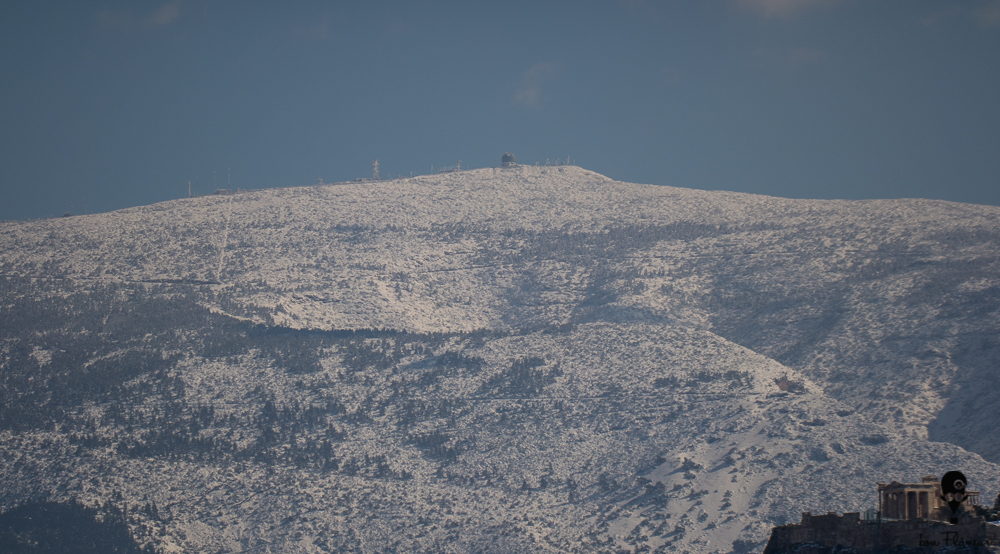Mount Hymettus
The third highest mountain in Athens with its characteristic elongated shape.

The third highest mountain in Athens with its characteristic elongated shape.
Home > Athens > Nature > Panoramic view spots > Greater Athens > Mount Hymettus

















Mount Hymettus is one of five mountains form the Athens basin and is located southeast of the city. It has an early Helladic name, so old that its etymology is uncertain. Mount Hymettus covers an area of 81,230 acres. It is 20 km long with its highest peak at 1,026 metres. It has a deep gorge and 50 caves and cliffs. It is a formation of great geological interest because of the large variety of rocks and presents additional archaeological interest due its Byzantine monuments and ancient sanctuaries. The Botanic woods of Athens University are located on its slopes. Finally, the Heridanus stream perhaps springs from this mountain. Mount Hymettus is a unique place of outstanding natural beauty, ideal for hiking, walking and cycling, in spite of some steep slopes (for lovers of climbing: http://www.athensclimbing.com/). As for its view, it is stunning. From up here, almost the entire city is visible from north to south. The mountain is closed to visitors from sunset to sunrise.
Hymettus is an “oasis” a mere 15-minute ride from the city center. It is a protected mountain (listed as a NATURA 2000 area) and has 650 species and subspecies of plants, rare species of Attica flora, such as the Iris Attica, various mammals, three species of tortoises, one bat species and a few reptile species. Moreover, it is a migratory rest stop for thousands of birds. During previous centuries and especially during the Ottoman years, the mountain became bald due to its logging and the superstition that the plant “euphorbia harakia” was responsible for fevers during northeaster winds. Several parts of the mountain have been under strong residential pressure and frequently devastated by fires. These events have sensitized many locals. As a result, the mountain is currently guarded by volunteers (especially during the summer months). The mountain has been nicknamed “Crazy” or “Crazy Mount”. There are quite a few stories about the origin of the nickname. Some believe it to be an alteration of the French phrase “très long” (=very long) used by foreign visitors. Others believe the nickname was used by ancient Athenians due to the erratic weather conditions on the mountain. Indeed, Athenians were said to be “raving mad” because for them the sun rises from “Trelovouni” (=crazy mountain) and sets at Daphni, where the city’s biggest psychiatric hospital is located.
Attic Green, (d.u.), Υμηττός- Αισθητικό δάσος, [Hymettus- Aesthitician forest],
http://www.attiko-prasino.gr/Default.aspx?tabid=1137&language=el-GR
Last visit 28/5/2013
Municipality of Kessariani, (d.u.), Ο Υμηττός και η ιστορία του, [Hemyttus and its history]
http://portal.kessariani.gr/portal/page/portal/Index/
Last visit 28/5/2013
Kapetanios V. A., (2006), Αθήνα Ζεις; Η πόλη που έφυγε, η πόλη που μένει…, [Athens are you alive? The city that left, the city that remains] Athens: Philippoti Publication
Movie library of Television, (d.u.), Υμηττός, [Hymettus], στο Πλανήτης Γη SOS, [Planet Earth, SOS], Digital Archive, ERT,
http://www.ert-archives.gr/V3/public/main/page-assetview.aspx?tid=0000049510&tsz=0&autostart=0
Last visit 28/5/2013
Share